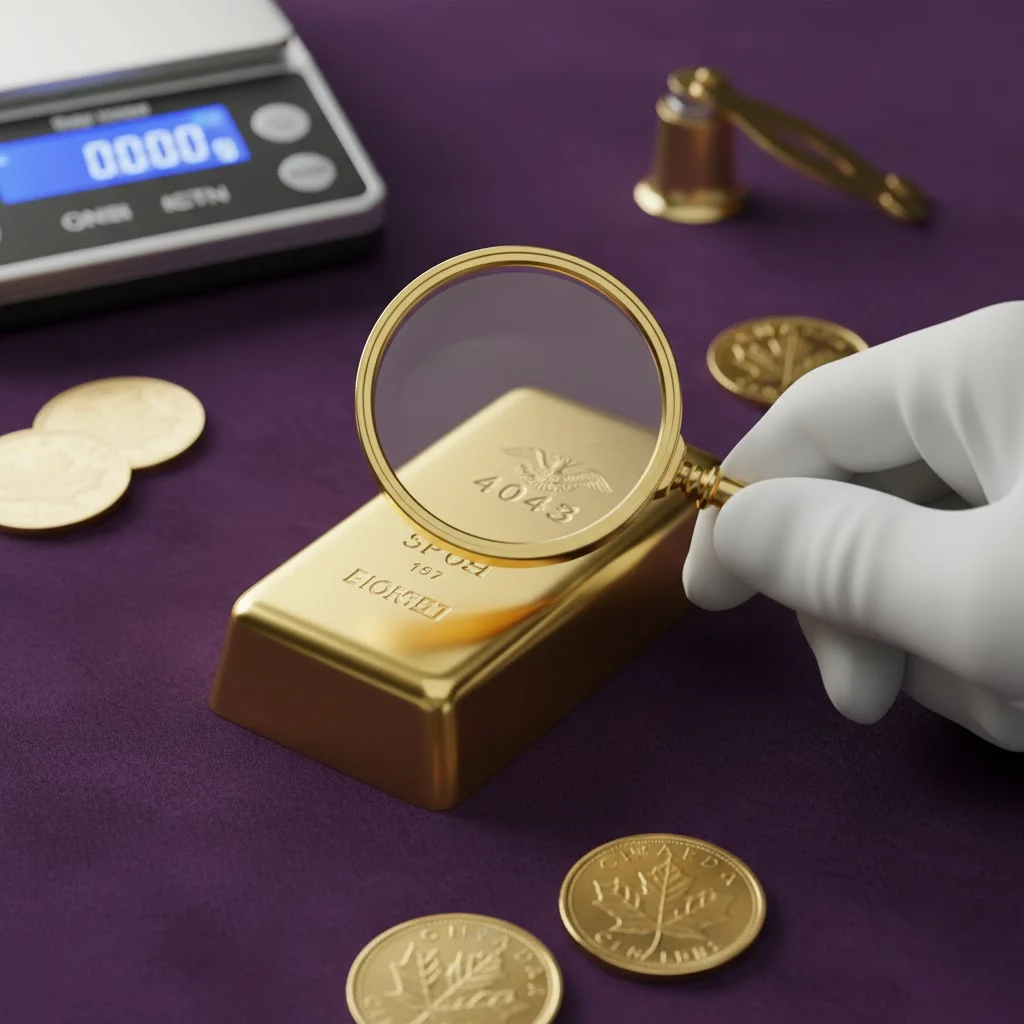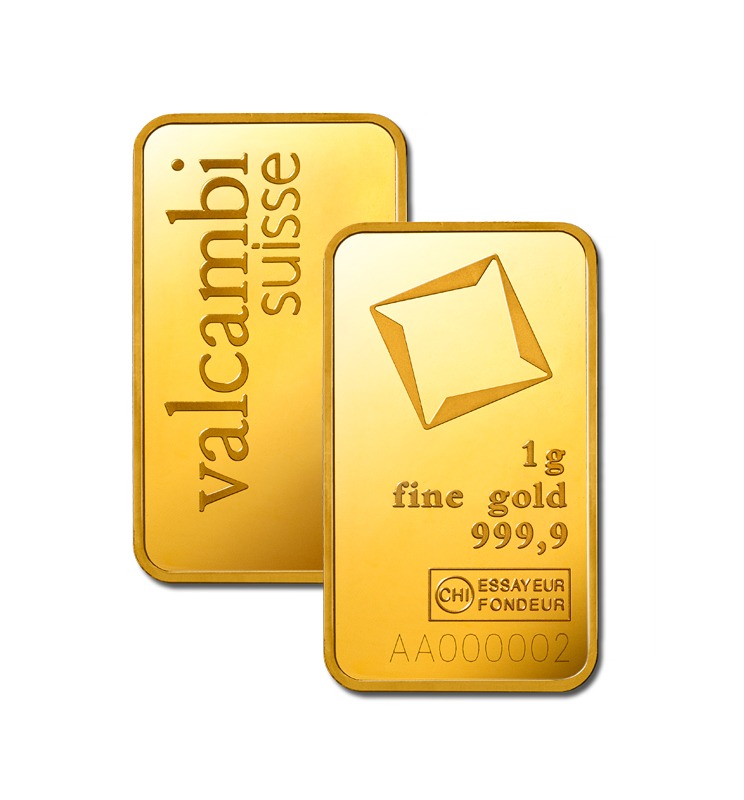The global gold market is valued in the trillions, making it an attractive target for counterfeiters. Whether you’re a seasoned investor or purchasing your first piece of gold bullion, knowing how to verify authenticity is essential. Counterfeit gold products have become increasingly sophisticated, with fake bars and coins sometimes fooling even experienced collectors. This comprehensive guide will walk you through the methods professionals use to authenticate gold, as well as practical techniques you can employ yourself.
Why Gold Authentication Matters
Gold has been a store of value for thousands of years, and its enduring appeal makes it a prime target for fraud. Counterfeiters have developed increasingly clever methods, from gold-plated tungsten bars that match gold’s density almost perfectly, to sophisticated replicas of government-minted coins. The financial stakes are high: purchasing fake gold means losing not just your investment, but also the security and wealth preservation that real gold provides.
The rise of online marketplaces and private sellers has made authentication even more critical. While reputable dealers offer guarantees and certification, secondary markets and estate sales present greater risks. Understanding verification methods protects your investment and helps you make informed purchasing decisions.
Visual Inspection: The First Line of Defense
Before diving into technical testing, a thorough visual inspection can reveal obvious counterfeits and help you identify red flags.
Examine the Markings
Legitimate gold bullion bars and coins feature specific hallmarks and markings that indicate purity, weight, manufacturer, and sometimes a serial number. Look for:
- Purity stamps: Genuine gold displays its fineness, typically marked as .999 or .9999 for bullion-grade gold, representing 99.9% or 99.99% purity respectively
- Manufacturer marks: Reputable refiners like PAMP Suisse, Perth Mint, Royal Canadian Mint, and Johnson Matthey have distinctive logos and designs
- Weight markings: The exact weight should be clearly stamped, usually in troy ounces or grams
- Serial numbers: Many modern bars include unique serial numbers that can be verified with the manufacturer
Check that these markings are crisp, evenly stamped, and professionally executed. Blurry, uneven, or shallow impressions often indicate counterfeits.
Assess the Overall Appearance
Gold has distinctive visual characteristics. Pure gold exhibits a rich, warm yellow color that doesn’t tarnish or oxidize. If you notice any discoloration, greenish tints, or tarnishing, this suggests a base metal alloy or gold plating rather than solid gold.
Examine the edges and surfaces for seams, which could indicate a gold-plated shell filled with cheaper metal. Look for any irregularities in texture or finish. Government minted coins should display sharp, detailed designs with no blurring or loss of definition.
Compare to Known Authentic Pieces
If possible, compare your piece to verified authentic gold from the same mint or refiner. Pay attention to weight feel, color tone, design details, and overall craftsmanship. Many counterfeiters copy popular products, but subtle differences in design elements, font styles, or dimensions can reveal fakes.

Physical Testing Methods
Beyond visual inspection, several physical tests can help verify gold authenticity without damaging the piece.
The Magnet Test
Gold is not magnetic. This simple test can quickly eliminate some counterfeits made from magnetic metals. Use a strong neodymium magnet and bring it close to your gold piece. If the item is attracted to the magnet, it’s definitely not pure gold.
However, passing the magnet test doesn’t guarantee authenticity. Many fake gold items use non-magnetic metals like copper, brass, or tungsten to avoid detection. This test works best as an initial screening tool rather than definitive proof.
The Size and Weight Test
Gold is remarkably dense, with a specific gravity of 19.3 grams per cubic centimeter. This means gold is approximately twice as heavy as lead and significantly heavier than most other metals. Counterfeiters struggle to replicate this density perfectly.
Weigh your gold piece on a precise digital scale that measures to at least 0.01 grams. Compare the actual weight to the stated weight on the item. Any significant discrepancy is a red flag. For bars, you can also measure the dimensions with calipers and calculate the expected weight based on gold’s density. If the numbers don’t match, the item may be fake or impure.
The Ping Test
Gold produces a distinctive, high-pitched ringing sound when struck, often described as a “ping.” This sound resonates clearly and sustains for several seconds, unlike the dull thud produced by most base metals.
To perform this test, balance the coin or bar on your fingertip and gently strike it with another piece of metal. Many collectors use specialized ping test apps that analyze the sound frequency to determine if it matches authentic gold. Different gold products produce characteristic frequencies, so compare your results to verified samples or app databases.
While useful, the ping test requires practice and may be less effective with small items or in noisy environments.
The Ice Test
Gold has exceptionally high thermal conductivity, meaning it transfers heat rapidly. Place an ice cube on your gold bar or coin. The ice should begin melting almost immediately upon contact, much faster than it would on most other metals. The gold itself will feel cold to the touch but will quickly return to room temperature when handled.
This test works best with larger items like bars where the ice cube has sufficient contact area. While not foolproof, it’s a quick supplementary check.
Advanced Testing Methods
For high-value purchases or when absolute certainty is required, advanced testing methods provide the most reliable authentication.
Ultrasonic Testing
Ultrasonic thickness gauges use sound waves to measure the thickness and density of metals. This non-destructive method can detect gold-plated tungsten cores, hollow coins, and other sophisticated counterfeits. Professionals use this equipment to verify that gold is solid throughout, not just on the surface.
These devices are expensive but are standard equipment at reputable dealers and testing laboratories. If you’re making a substantial purchase, consider having the seller test the gold with ultrasonic equipment in your presence.
X-Ray Fluorescence (XRF) Analysis
XRF spectrometers are the gold standard for precious metal authentication. These devices use X-rays to analyze the elemental composition of a material without damaging it. Within seconds, an XRF analyzer can determine the exact purity of gold and identify any other metals present.
Professional dealers, refiners, and testing laboratories use XRF machines routinely. While these devices cost thousands of dollars, many dealers will perform XRF testing free of charge for potential buyers. Never hesitate to request this analysis for expensive purchases.
Acid Testing
Acid testing involves applying various strength acids to the metal to determine purity. Different gold karats require different acid strengths to produce a reaction. Pure 24-karat gold won’t react to nitric acid, while lower karat gold or base metals will change color or dissolve.
This method is destructive, as it requires scratching or filing a small area of the gold to create a test surface. While effective, most collectors prefer non-destructive methods for valuable pieces. Professional assayers use acid testing as part of comprehensive authentication procedures.
Electronic Gold Testers
Electronic testers measure electrical conductivity to assess gold purity. These handheld devices provide readings that indicate whether an item matches the expected conductivity profile for gold. They’re more affordable than XRF analyzers and provide quick, non-destructive results.
Quality varies among electronic testers, and they can be fooled by sophisticated counterfeits. Use them as one component of a multi-method authentication approach rather than sole verification.
Authentication by Professionals
For significant investments, professional authentication services provide peace of mind and documentation.
Third-Party Grading Services
Organizations like Professional Coin Grading Service (PCGS) and Numismatic Guaranty Company (NGC) authenticate and grade coins, encapsulating verified pieces in tamper-evident holders with certification labels. These services charge fees based on the coin’s value but provide widely recognized authentication that enhances resale value.
For bars, services like the American Precious Metals Exchange (APMEX) and major refiners offer authentication and certification programs.
Assay Offices
Independent assay offices specialize in testing precious metals. They use multiple testing methods, including fire assay (the most accurate method, though destructive), to provide certified reports on gold purity and weight. These reports serve as official documentation of authenticity and are particularly valuable for large holdings or estate settlements.
Best Practices for Buying Gold
Prevention is the best authentication strategy. Follow these practices to minimize the risk of purchasing counterfeit gold:
Buy from reputable dealers: Established dealers with strong reputations have authentication protocols and stand behind their products. Look for dealers who are members of industry organizations like the Professional Numismatists Guild or the Industry Council for Tangible Assets.
Request documentation: Legitimate gold products come with certificates of authenticity, assay cards, or original packaging. Keep all documentation with your gold.
Verify serial numbers: For products with serial numbers, verify them with the manufacturer’s database when possible.
Understand pricing: If a deal seems too good to be true, it probably is. Gold prices are transparent and global. Significant discounts below spot price should raise suspicions.
Inspect before payment: Whenever possible, examine gold in person and perform basic tests before completing the transaction. Reputable sellers welcome scrutiny.
Use secure payment methods: Credit cards and escrow services offer buyer protection that cash transactions don’t provide.
Conclusion
Authenticating gold bullion bars and coins requires a combination of knowledge, vigilance, and appropriate testing methods. Start with visual inspection and basic physical tests, then employ advanced techniques for valuable items or questionable pieces. While no single method provides absolute certainty, using multiple verification techniques together creates a comprehensive authentication process.
The investment in proper authentication—whether through your own testing equipment or professional services—is trivial compared to the financial loss of purchasing counterfeit gold. As counterfeiting techniques evolve, staying informed about new verification methods and purchasing from trusted sources remains your best defense. Remember that reputable dealers view authentication requests as signs of an informed buyer, not mistrust. Never hesitate to verify what you’re buying, and never compromise on authentication for convenience or to expedite a transaction.
Your gold investment represents financial security and wealth preservation. Ensuring its authenticity protects that value for years to come.








Leave a comment